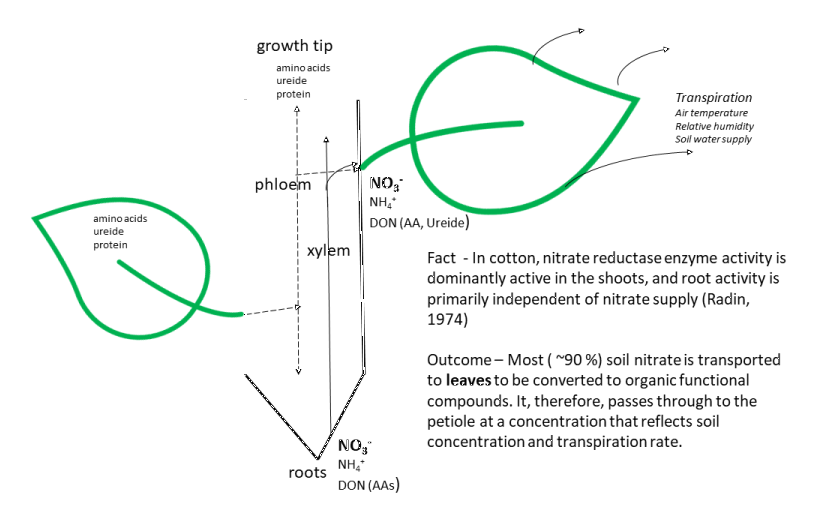Some advisers have asked, “why have BPC continued to use petiole nitrate-N” in our in-crop cotton N management service?
My answers are sometimes a bit long-winded and technical, but the short answer is that “we haven’t been able to find a technology that is able to replicate the responsiveness of tracking nitrate-N from the soil through the roots and stems to a cotton leaf”. When used with other crop observations, it becomes a powerful base on which to make in-crop N management decisions.
Cotton is somewhat unique among crops in that it has a very small capacity to process nitrate to organic compounds (via the nitrate reductase enzyme) in the roots. Most crops can process up to 40 % in the roots, whereas cotton has been measured to process less than 10 % locally. Lack of local processing means that roots are highly reliant on the leaves sharing after it has been transported and processed, making root growth vulnerable to low N supply when other plant parts won’t share.
This means that the petiole nitrate-N has a very close relationship to root-accessible soil nitrate; hence, a more rapid response to increases and decreases in soil nitrate-N soil concentration.
An adequate concentration represents a balance between soil supply and plant metabolism. High concentration suggests supply in excess of demand (growth rate), and low levels, insufficient supply either resulting from low soil concentration or a root access limitation.
Other samples that rely on total N leaf content, although having a workable relationship to plant N status, tend to be less responsive to changes in soil N status as stored leaf organic N compounds and N mobilised from other plant parts can mask a change in soil N supply for a longer period of time than petiole nitrate-N. What does this mean? If your available nitrate-N drops, your petiole test result shows this quickly enough for you to do something about it.
As long as petiole samples are collected from unstressed plants that are growing at close to their maximum photosynthetic rate, the interpretation of results is reasonably reliable and generally follows a predetermined pattern from squaring to cutout.

